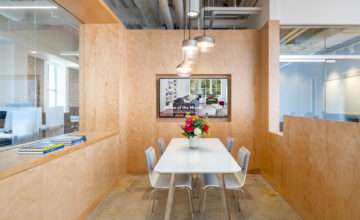Click here for more details and to register for free
Historic Properties, National Park Service Preservation Briefs and local design ordinances. Work on historic properties also needs to adhere to the Americans with Disabilities Act (ADA) requirements and other building codes. The architecture and historic preservation fields look at accessibility as a way to provide not only code compliance but equitable access to spaces and experiences. This workshop will look at how accessibility to and in historic properties can be improved to meet the current knowledge and needs around accessibility. Four presenters in a series of three presentations will explain the basics of the ADA and best practices for creating accessible spaces, how to modify historic buildings to meet best practices and what some examples are of these practices being applied to spaces in Minnesota. Join the Minnesota Historical Society’s Local History Services for this instructive workshop.
Continuing education
This program has been approved for 3.0 HSW Learning Units. Attendees must attend and be engaged in all three presentations in order to receive this credit. Partial credit is not possible.
- Learn the basics of Americans with Disabilities Act (ADA) that includes not only the legal responsibility for building owners but advocates for best practices and understanding of how a space can be evaluated for better accessibility.
- Understand the importance of updating historic buildings to provide equitable access to the building’s spaces for occupants and visitors.
- Identify elements of a historic property, such as historic fabric or interior spaces, that can be sensitively modified to create spaces that provide increased accessibility for occupants and visitors while following preservation standards.
- Evaluate how to plan and employ design solutions for increased access through additions to historic properties including real-world case studies from the state of Minnesota.
Presenters
- David Fenley – ADA Director, MN Council on Disability
- Ray Bloomer – Accessibility Specialist, Accessibility Support Program, WASO, National Park Service
- Bill Hickey, AIA – Principal, Architecture, Planning, Historic Preservation, Collaborative Design Group
- Bess McCollough, AIA – Architecture, Collaborative Design Group



